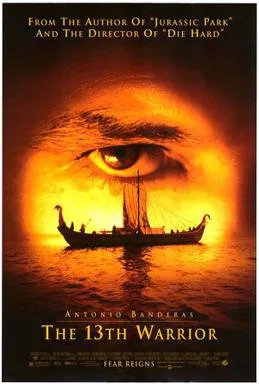Historical accuracy of The 13th Warrior

Historical accuracy of The 13th Warrior

Characters
Ahmad Ibn Fadlan's journey
The film is loosely based on the real travels of Ahmad Ibn Fadlan, a 10th-century Arab traveler and chronicler. However, the film takes significant liberties with his historical account, adding fictional adventures and characters.
Buliwyf and the Norse warriors
The Norse warriors are not based in historical characters. Some of them are however inspired by characters from the Beowulf epic. This includes Buliwyf.
The 'seeress'
The film includes a 'seeress' character who provides cryptic prophecies and guidance. While Viking society did have individuals who fulfilled similar roles, the film's portrayal of the seeress is likely exaggerated and more fantastical than realistic.
Story
The encounter with the Vikings
While Ibn Fadlan did encounter Vikings during his travels, the film's portrayal of their culture and customs is a blend of historical accuracy and Hollywood embellishment. The film captures some aspects of Viking society but also relies on stereotypes and dramatic license.
The 'Wendol' as antagonists
The film's portrayal of the 'Wendol' as monstrous cave-dwelling cannibals is entirely fictional. There is no historical evidence to support this depiction. The Wendol are likely a fictionalized representation of various groups encountered by the Vikings.
The battle against the Wendol
The film's climactic battle against the Wendol is a fictional creation. There is no historical record of such a battle or of Vikings encountering creatures like the Wendol.
The relationship between Ibn Fadlan and the Vikings
The film depicts a growing bond of respect and friendship between Ibn Fadlan and the Vikings. While this is a central theme of the film, it is a fictionalized element added for narrative purposes.
Setting
The portrayal of Viking culture
The film attempts to portray some aspects of Viking culture, such as their warrior ethos, their seafaring skills, and their social customs. However, some details are inaccurate or exaggerated for dramatic effect. The film offers a romanticized and somewhat stereotypical view of Vikings.
The use of Old Norse language
The film incorporates some Old Norse language, which adds to the authenticity of the setting. While the accuracy of the pronunciation and vocabulary may be debated by experts, the inclusion of the language is a positive element.
The depiction of Viking weaponry and armor
The film's portrayal of Viking weaponry and armor is a mixed bag. Some elements are accurate, while others are more Hollywood-ized. The film's focus is on visual spectacle rather than strict historical accuracy in this regard.
The depiction of Viking rituals and beliefs
The film incorporates some elements of Viking rituals and beliefs, such as their funerary customs and their belief in fate. However, some aspects are simplified or misinterpreted for dramatic effect. The film's portrayal of Viking religion is not entirely accurate.
The depiction of Viking longships
The film's portrayal of Viking longships is generally accurate in terms of their basic design and functionality. However, some details may be stylized or inaccurate for cinematic purposes.
Overall
The film's overall tone and message
The film's overall tone is one of adventure and heroism, with a focus on the clash of cultures and the overcoming of adversity. While this is entertaining, it also simplifies the complexities of the historical context and the characters involved.
